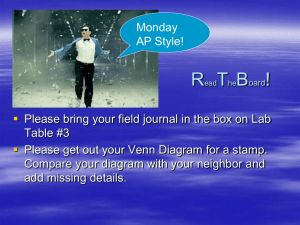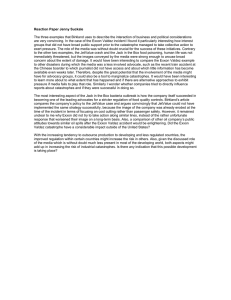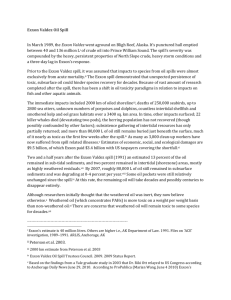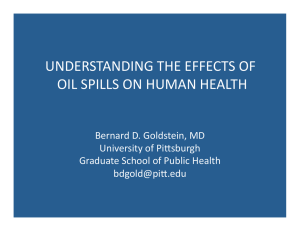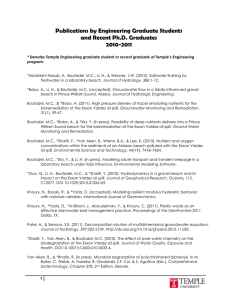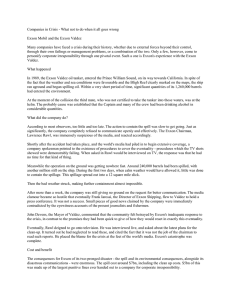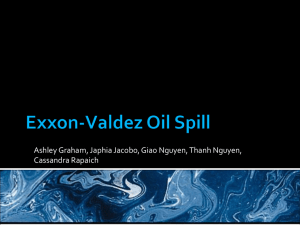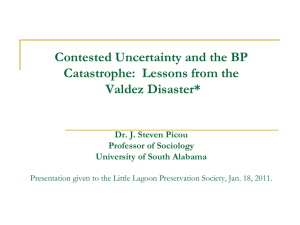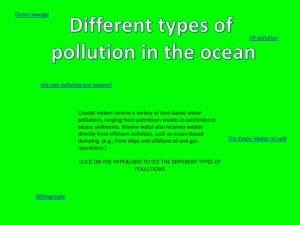4 - Fort Thomas Independent Schools
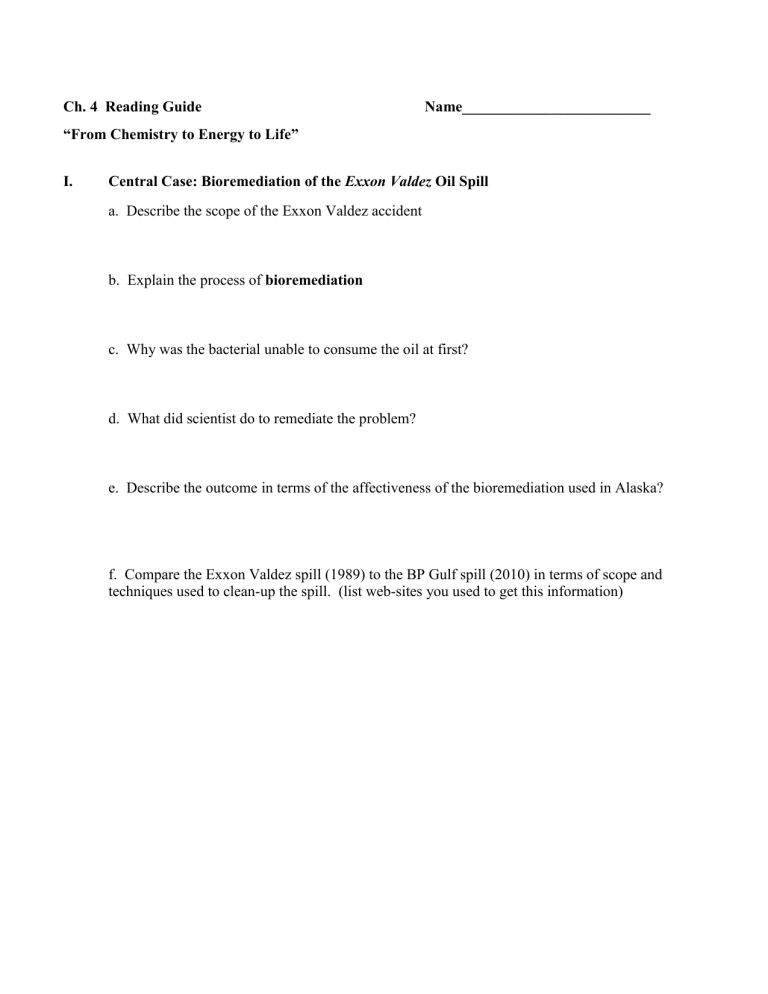
Ch. 4 Reading Guide
“From Chemistry to Energy to Life”
Name_________________________
I. Central Case: Bioremediation of the Exxon Valdez Oil Spill a. Describe the scope of the Exxon Valdez accident b. Explain the process of bioremediation c. Why was the bacterial unable to consume the oil at first? d. What did scientist do to remediate the problem? e. Describe the outcome in terms of the affectiveness of the bioremediation used in Alaska? f. Compare the Exxon Valdez spill (1989) to the BP Gulf spill (2010) in terms of scope and techniques used to clean-up the spill. (list web-sites you used to get this information)
II. Chemistry and the Environment a. What was enacted as a result of the Exxon Valdez accident? b. Why is an understanding of chemistry vital when studying environmental issues? (give a few examples from pg. 88) c. Know the top 3 to most abundant elements in various places on Earth. (table 4.1 pg. 89)
1. Atoms and elements are chemical building blocks a. Describe matter : b. How does the law of conservation of matter help us in Environmental Science? (2 ways) c. d. e. a.
Element
Atoms -
– protons, neutrons, & electrons f. isotopes - g. radioactive vs. stable - molecules -
- h. half-life - i. ions -
2. Atoms bond to form molecules and compounds a. molecules - b. coumpound - c. ionic vs. covalent bonds - d. polar covalent bonds - e. Know formulas for: ozone ______, methane ______, carbon dioxide ______, oxygen ______
3. The chemical structure of the water molecule facilitates life a. List water’s properties that make it important for supporting life and stabilizing climate b. Draw the chemical structure of several water molecules showing hydrogen bonding.
4. Hydrogen ions determine acidity a. What determines acidity or basicity? b. Describe the pH scale. (draw it pg.96)
5. Matter is composed of organic and inorganic compounds a. organic vs. inorganic compounds - b. hydrocarbons
6. Macromolecules are building blocks of life a. Polymers b. List the 4 macromolecules that are essential to life. c. d. e. f. proteins
DNA
RNA
-
-
- nucleic acids - g. Genes - h. Carbohydrate s- i. Lipidsj. What are some different types of lipids?
7. We ccreate synthetic polymers a. What is a “ synthetic polymer ” and where do they originate? b. List several kinds of plastics . c. What are the advantages and disadvantages of plastics?
8. Organisms use cells to compartmentalize macromolecules (know figure 4.12) a. Describe a cell . b. eukaryotes vs. prokaryotes -
III. Energy Fundamentals a. Why is energy important to discuss in Environmental Science?
b. What is energy ? (defined and explained)
c. kinetic vs. potential - d. chemical energy-
1. Energy is always conserved . . . a. The first law of thermodynamics : b. The second law of thermodynamics c. energy conversion efficiency and entropy (fg. 4.14)
2. Light energy from the sun powers most living systems a. Why is the sun so important to environmental science? b. autotrophs (primary producers)- c. photosynthesis (know fig. 4.15 and 4.16)-
3. Photosynthesis produces food for plants and animals a. chloroplasts and chlorophyll - b. Know the equation for PHOTOSYNTHESIS !
4. Cellular Respiration releases chemical energy a. cellular respirationb. heterotrophsc. Know the equation for RESPIRATION !
5. Geothermal energy also powers Earth’s systems a. Describe energy from the moon? b. Describe geothermal energy emanating from inside Earth. c. What do bacterial communities do to obtain energy when they do not have adequate sunlight.
IV. The Origin of Life
A. Early Earth was a very different place.
B. Several hypotheses have been proposed to explain life’s origin.
1. Primordial soup: The heterotrophic hypothesis
2. Seeds from space: The extraterrestrial hypothesis
3. Life from the depths: The chemoautotrophic hypothesis.
C. The fossil record has taught us much about life’s history a. How are fossils made? b. The earliest evidence of life on Earth comes from rocks about _______________ years old. c. What does the fossil record show? d. Be able to discuss Earth’s oldest and youngest living things (Fig. 4.21 pg 106)
D. Present-day organisms and their genes help us decipher life’s history a. Describe how the “tree of life” is viewed in present day.
